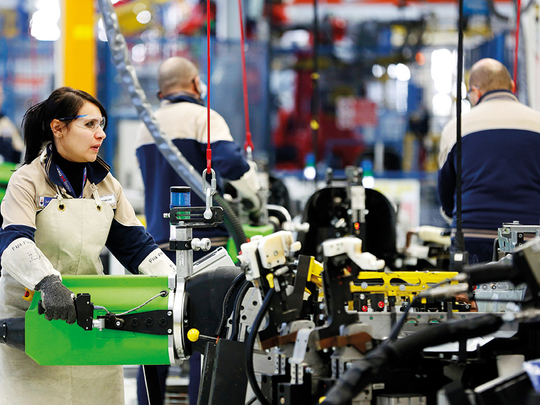
ROME
Italian employers group Confindustria on Thursday raised its forecasts for Italy’s economic growth this year and next, and the government said it would do the same when it issues new official projections next week.
Italian economic data has been brightening since gross domestic product (GDP) rose a stronger-than-expected 0.4 per cent in the first quarter, though the country continues to lag most of its Eurozone peers.
Confindustria raised its forecast for 2017 growth to 1.5 per cent from a previous forecast of 1.3 per cent, made in June.
Next year, when Italy faces an uncertain national election, growth will slow to 1.3 per cent, the employers’ lobby said, revising up its June forecast from 1.1 per cent.
Prime Minister Paolo Gentiloni’s government has targeted 2017 growth of 1.1 per cent but that forecast, made in April, will be raised when the Treasury issues new projections next week, Economy Minister Pier Carlo Padoan said.
“The growth outlook has improved since April,” Padoan told a conference in Rome, adding that the strength of the euro could slow down the economy at some point.
The Treasury’s chief economist said on Tuesday that growth is now seen at 1.4 or 1.5 per cent this year, and “well over 1.2 per cent” next year. The government’s April forecast was for 1.0 per cent in 2018.
Gross domestic product rose 0.4 per cent in each of the first two quarters of this year — strong increases by the standards of Italy, which has been the most sluggish Eurozone economy since the launch of the single currency in 1999.
The economy has recently been buoyed by domestic demand, with consumer spending supported by tax cuts for low earners.
Growth will accelerate to 0.5 per cent in the third quarter, Confindustria forecast, before slowing to 0.3 per cent in the last.
The stronger outlook will help public finances, said Confindustria, which trimmed its forecast for the 2017 budget deficit to 2.1 per cent of GDP from 2.3 per cent, bringing it into line with the government’s target.
Confindustria also trimmed its forecast for Italy’s huge public debt — the highest in the Eurozone after Greece’s — to 132.6 per cent of GDP this year, from a June forecast of 133.2 per cent. That would leave the debt at the same level as in 2016.
Padoan, who was chief economist a the Organisation for Economic Cooperation and Development before joining the government in 2014, seemed to suggest he would not seek a further term after the election due by May next year.
“I hope to be able to return to my (economic) studies as soon as possible,” he said.










